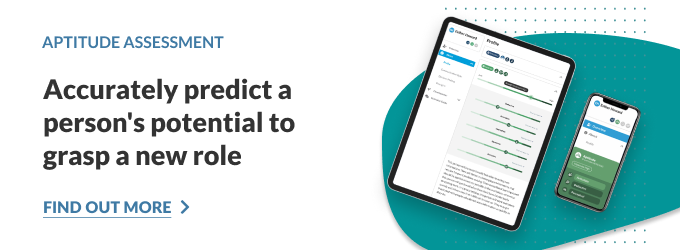Would you call yourself a ‘critical thinker’? The Watson Glaser test is designed to discover if you are. Used in the legal and banking industry, it has become a well recognised aptitude assessment, and one which graduates to senior level management will become accustomed to, with roles they apply for.

In this guide, we will talk more about what the Watson Glaser test is, how long it will take, why employers like to use the assessment, some tips on how to practice passing the test and finally, some practice questions to get you more familiar with the test.
What is the Watson Glaser test?
The Watson Glaser test is a comprehensive aptitude assessment used commonly by law practices to test a candidate’s ability to critically think - amongst other things. It helps create a shortlist of candidates who are likely to have what it takes for training contracts and workplace schemes.
Being able to test your critical thinking ability is important, especially in a law-based scenario. The Watson Glaser test assesses a candidate’s ability to; think critically, draw conclusions, assess strong and weak arguments, recognise assumptions and evaluate arguments.
Originally developed by Goodwin Watson and Edward Glaser, The Watson Glaser Test (W-GCTA) measures the critical skills that are necessary for presenting in a clear, structured, well-reasoned way, a certain point of view and convincing others of your argument - perfect for the legal profession.
In a typical Watson Glaser test you will be asked a series of questions that challenges your critical thinking skills. Questions will include;
Assessment of Inferences
Questions are focused around one statement and you must assume that all of the information in these statements is true and not use any outside knowledge to inform your answer. The statement is then followed by a series of inferences relating to it which you must label each on a scale from True to False.
Recognition of Assumptions
Another statement is given to examine, you’re then given a number of assumptions and asked if the assumptions have, or have not been made.
Deduction
You’re given a passage followed by a number of proposed conclusions to the passage. You must then decide whether the conclusion “follows” or “does not follow” the information in the passage.
Interpretation
You’re given a passage and assume everything in it to be true. You must then decide on the level of importance of the information provided and apply it logically - assessing whether or not the conclusion follows or not.
Evaluation of Arguments
You must decide, from the information provided, if you can determine if the argument is a strong one or a weak one.
How long does the Watson Glaser test take?
The standard test time for the Watson Glaser test is anywhere from 30 minutes to 60 minutes depending on the amount of questions being asked. It’s common to find tests that have either 40 or 80 questions.
Why is the Watson Glaser test used by employers?
In the legal profession, the Watson Glaser test is one of the most comprehensive in identifying the ability to think critically; an area which is fundamental in this profession. Employers in the legal profession (and not only legal) are searching for candidates who can evaluate the information and draw conclusions that can be supported.

With more and more candidates applying for roles, the Watson Glaser test has become a great assessment tool of not only a candidate’s ability to critically think, but as a device to sift through candidates’ applications at a quicker rate.
But, the key is, critical thinking. It’s the ability to consider a range of information derived from many different sources, to process this information in a creative and logical manner, challenging it, analysing it and arriving at considered conclusions which can be defended and justified’ (Moon, 2008). Employers want to see their employees use these skills on a daily basis, especially when they are challenging assumptions or information in their chosen field.
Tips for practicing for the Watson Glaser test
Preparation is key when it comes to the Watson Glasser test, not only because you can develop your skills over a short period of time but also, it helps to know what these tests can look like - and what is expected of you. Here are some tips for practicing the Watson Glaser test:
Don’t assume, use only the information provided
It’s easy to slip into past experiences or general knowledge to answer questions. You must not do this. Critical reasoning tests are not about what you think, they are about how you think. Use only the information provided to answer the questions presented.
Read everything carefully
Know what you’re answering. Take the time to read the question very carefully as the information contained will not only help you understand what’s being asked but also, how to answer. This is essential in critical thinking; the ability to take in information and act on it accordingly.
Study logical fallacies
Knowing the difference between sound logic and logical fallacies can help maximise performance on a critical thinking assessment. Knowing the different types of logical fallacies (i.e. strawman, red herring argument) will help you identify, test and answer the question carefully.
How to pass the Watson Glaser test
Be sure to practice simulations of the Watson Glaser test as this kind of testing is specific and follows a set of rules. It will help guide you through the real test on the day because you're mentally primed for this type of examination. Take into consideration the information above when practicing as this will best help you on the day.
Watson Glaser test example questions
Example question 1
Following a reduction in the number of applicants, the college has been asking students to evaluate faculty teaching performance for the last two years. The college's management announced that the purpose of these evaluations is to give information to faculty about teachers' strengths and weaknesses, and to allow those who make decisions about pay raises and promotions to reward the better teachers. Last week, Professor Burke, a recently retired senior lecturer at the college, wrote a letter in which he objected to these evaluations, claiming they compromise academic standards.
There is more to the management's announced intentions than those mentioned by them in the passage.
A. True
B. Probably True
C. Insufficient Data
D. Probably False
E. False
Answer: C
The text begins by introducing the management's announcement as a reaction to a negative trend: Reduction in the number of student applications.
While the announcement explicitly addresses both the college's staff and its students, it is likely that the issue at hand is not only a wish to achieve academic excellence but in fact a means to resolve the issue of reduced applications and college reputation, which has implications on the college's future. Therefore, the correct answer is probably true.
Example question 2
Physician: People who wish to prevent kidney stones should drink three glasses of freshly squeezed orange juice a day.
Proposed Assumption: Oranges are available throughout the year.
A. Assumption Made
B. Assumption Not Made
Answer: A
Assumption made.
Prevention is a continuing action. If one is advised to drink fresh orange juice on a daily basis, it means that one will be able to find oranges on a daily basis (throughout the year).
Example question 3
Should employees, who have over 5 years of experience in the company, be bound by law to give employers an advance notice of 60 days upon resignation?
Yes; research has shown that when forced to give an advanced notice, many employees have a change of heart and decide to stay, making their workplace a more stable and experienced environment.
A. Strong
B. Weak
Answer: A
This argument targets both the action and the consequences of the action on the subject of the statement. It states that the action (forced to give an advanced notice) has a positive effect on the workplace; therefore it is an important argument, one that is relevant for the employers. Note, that this argument does not specifically target senior employees however it still clearly targets the essence of the statement.
Assess aptitude with Thomas
Understanding how quickly someone learns new information can inform your recruitment decisions and help build personal development programmes.
The Thomas Aptitude assessment (GIA) consists of 5 online tests, including reasoning, perceptual speed, number speed and accuracy, word meaning and spatial visualisation.
Speak to one of our team to learn how the Thomas Aptitude assessment can help you better understand the learning speed and trainability of your people.




